Related Research Articles
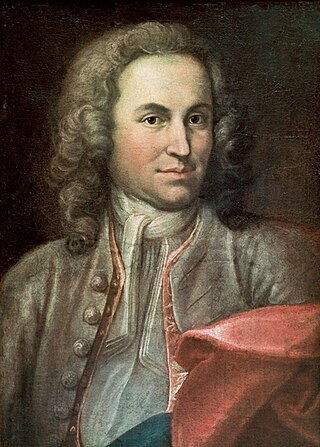
Nach dir, Herr, verlanget mich, BWV 150, is an early church cantata by Johann Sebastian Bach composed for an unknown occasion. It is unique among Bach's cantatas in its sparse orchestration and in the independence and prominence of the chorus, which is featured in four out of seven movements. The text alternates verses from Psalm 25 and poetry by an unknown librettist. Bach scored the work for four vocal parts and a small Baroque instrumental ensemble of two violins, bassoon and basso continuo.
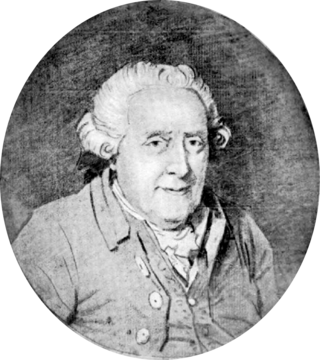
Wilhelm Friedemann Bach was a German composer, organist and harpsichordist. He was the second child and eldest son of Johann Sebastian Bach and Maria Barbara Bach. Despite his acknowledged genius as an improviser and composer, his income and employment were unstable, and he died in poverty.
The Bach-Werke-Verzeichnis is a catalogue of compositions by Johann Sebastian Bach. It was first published in 1950, edited by Wolfgang Schmieder. The catalogue's second edition appeared in 1990. An abbreviated version of that second edition, known as BWV2a, was published in 1998.

The title Notebook for Anna Magdalena Bach refers to either of two manuscript notebooks that the German Baroque composer Johann Sebastian Bach presented to his second wife, Anna Magdalena. Keyboard music makes up most of both notebooks, and a few pieces for voice are included.
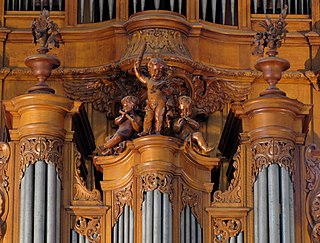
The Eight Short Preludes and Fugues, BWV 553–560, are a collection of works for keyboard and pedal formerly attributed to Johann Sebastian Bach. They are now believed to have been composed by one of Bach's pupils, possibly Johann Tobias Krebs or his son Johann Ludwig Krebs, or by the Bohemian composer Johann Caspar Ferdinand Fischer.

Klavierbüchlein für Wilhelm Friedemann Bach is a collection of keyboard music compiled by the German Baroque composer Johann Sebastian Bach for his eldest son Wilhelm Friedemann. It is frequently referred to simply as Klavierbüchlein.

The four orchestral suites BWV 1066–1069 are four suites by Johann Sebastian Bach from the years 1724–1731. The name ouverture refers only in part to the opening movement in the style of the French overture, in which a majestic opening section in relatively slow dotted-note rhythm in duple meter is followed by a fast fugal section, then rounded off with a short recapitulation of the opening music. More broadly, the term was used in Baroque Germany for a suite of dance-pieces in French Baroque style preceded by such an ouverture. This genre was extremely popular in Germany during Bach's day, and he showed far less interest in it than was usual: Robin Stowell writes that "Telemann's 135 surviving examples [represent] only a fraction of those he is known to have written"; Christoph Graupner left 85; and Johann Friedrich Fasch left almost 100. Bach did write several other ouverture (suites) for solo instruments, notably the Cello Suite no. 5, BWV 1011, which also exists in the autograph Lute Suite in G minor, BWV 995, the Keyboard Partita no. 4 in D, BWV 828, and the Overture in the French style, BWV 831 for keyboard. The two keyboard works are among the few Bach published, and he prepared the lute suite for a "Monsieur Schouster," presumably for a fee, so all three may attest to the form's popularity.

Johann Sebastian Bach was a German composer and musician of the late Baroque period. He is known for his prolific authorship of music across a variety of instruments and forms, including; orchestral music such as the Brandenburg Concertos; solo instrumental works such as the cello suites and sonatas and partitas for solo violin; keyboard works such as the Goldberg Variations and The Well-Tempered Clavier; organ works such as the Schubler Chorales and the Toccata and Fugue in D minor; and choral works such as the St Matthew Passion and the Mass in B minor. Since the 19th-century Bach Revival, he has been generally regarded as one of the greatest composers in the history of Western music.
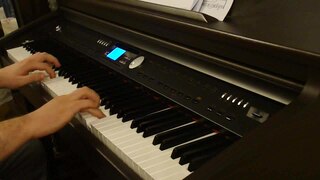
The Minuets in G major and G minor, BWV Anh. 114 and 115, are a pair of movements from a suite for harpsichord by Christian Petzold, which, through their appearance in the 1725 Notebook for Anna Magdalena Bach, used to be attributed to Johann Sebastian Bach. These minuets, which are suitable for beginners on the piano, are among the best known pieces of music literature. The 1965 pop song "A Lover's Concerto", of which millions of copies were sold, is based on the first of these Minuets.

The Prelude in C Minor, BWV 999, is, according to its only extant 18th-century manuscript, a composition for lute by Johann Sebastian Bach. In the manuscript, conserved as Fascicle 19 of Mus.ms. Bach P 804 at the Berlin State Library, Johann Peter Kellner wrote the piece down in keyboard notation. The time of origin of the work is not known: possibly Bach composed it in his Köthen period, that is, between 1717 and 1723, or the early years of his ensuing Leipzig period. Kellner's copy was produced after 1727, but before Bach's death in 1750.

BWV Anh., abbreviation of Bach-Werke-Verzeichnis Anhang, is a list of lost, doubtful, and spurious compositions by, or once attributed to, Johann Sebastian Bach.
The Telemann-Werke-Verzeichnis, abbreviated TWV, is the numbering system identifying compositions by Georg Philipp Telemann, published by musicologist Martin Ruhnke.

The organ sonatas, BWV 525–530 by Johann Sebastian Bach are a collection of six sonatas in trio sonata form. Each of the sonatas has three movements, with three independent parts in the two manuals and obbligato pedal. The collection was put together in Leipzig in the late 1720s and contained reworkings of prior compositions by Bach from earlier cantatas, organ works and chamber music as well as some newly composed movements. The sixth sonata, BWV 530, is the only one for which all three movements were specially composed for the collection. When played on an organ, the second manual part is often played an octave lower on the keyboard with appropriate registration. Commentators have suggested that the collection might partly have been intended for private study to perfect organ technique, some pointing out that its compass allows it to be played on a pedal clavichord. The collection of sonatas is generally regarded as one of Bach's masterpieces for organ. The sonatas are also considered to be amongst his most difficult compositions for the instrument.
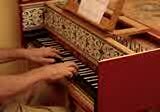
Twelve Little Preludes, BWV 924–930, 939–942 and 999, is a 19th-century compilation of short pieces, collected from various 18th-century manuscripts written by Johann Sebastian Bach and others. Notwithstanding their diverse origin and characteristics, they were published as a set of twelve keyboard preludes by Bach in, amongst others, the 36th volume of the Bach-Gesellschaft Ausgabe (BGA).
The Triple Concerto, BWV 1044, is a concerto in A minor for traverso, violin, harpsichord, and string orchestra by Johann Sebastian Bach. He based the composition on his Prelude and Fugue BWV 894 for harpsichord and on the middle movement of his Organ Sonata BWV 527, or on earlier lost models for these compositions.
References
- ↑ Schulenberg, David (2010). "An Enigmatic Legacy: Two Instrumental Works Attributed to Wilhelm Friedemann Bach". Bach. 41 (2): 46.
- ↑ The Faber Pocket Guide to Bach. Faber & Faber. 2011. p. 352. ISBN 978-0571272006.
- ↑ Schulenberg, David (2010). "An Enigmatic Legacy: Two Instrumental Works Attributed to Wilhelm Friedemann Bach". Bach. 41 (2): 54.